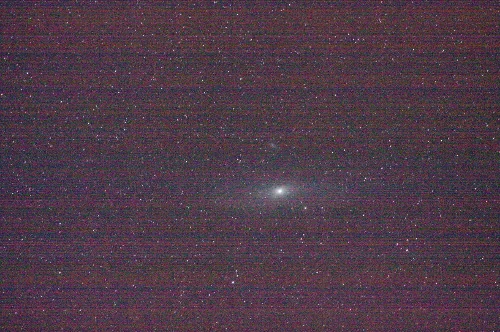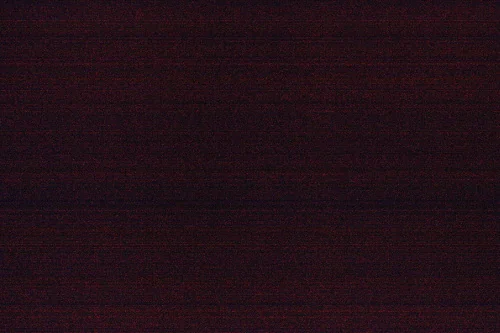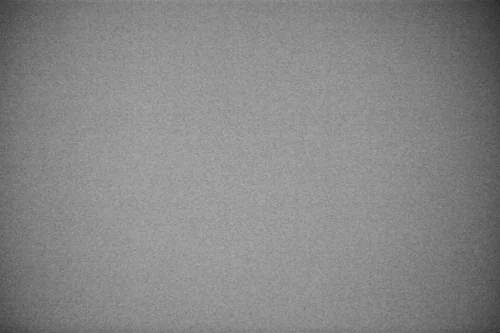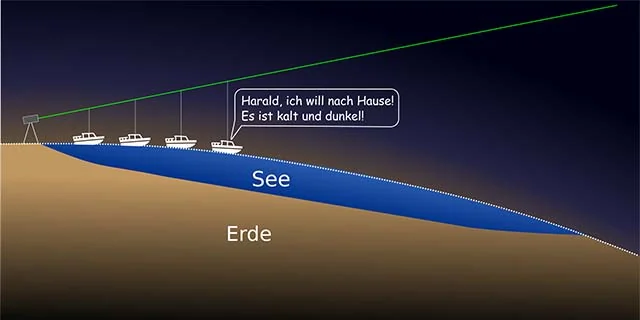Image Stacking

The process of combining multiple frames into a single image is called stacking. This process requires significant computational resources and is performed by dedicated software. The images shown on this page where created either with a software called Deep Sky Stacker or with a software called Fitswork. Both programs are available online for free and come with plenty of documentation in multiple languages.
Usually three different types of image are required for the stacking process: Light frames, Dark frames and Flat frames. The images containing the astronomical motive are called Light frames. Dark frames are images obtained by taking images with a closed lens cap. They do not contain any real image information but merely consist of sensor noise. These images provide important information on the electrical and thermal state of the imaging sensor. The third type of image are Flat frames. They are usually taken against a synthetic white background and help to eliminate effects caused by dust on the sensor and vignetting.



Light frames
The most important image type are the light frames. Whilst other frame types are used for improving the overall image quality, light frames carry the primary image information. The final image is composed by averaging the light frames. When doing untracked astrophotography you are forced to use high ISO settings. Naturally this comes with a significant increase in image noise. The noise can be so strong that you might not be able to make out the galaxy you wanted to image at all.
By averaging many light frames the stacking process drastically reduces image noise. The simple rule is: The more light frames, the better the quality of the final image. If you are into signal theory you might know that in an ideal case the signal to noise ratio increases with the square root of the number of images. Unfortunately this also means that to further improve the final image you'll need ever more light frames. In practical terms it means that when doing untracked astrophotography no fewer than 100 light frames should be taken. For my images i went as far as using 750 light frames obtained during multiple sessions for some of the images.
The exposure time depends on the objective being used as well as the position of the motive in the night sky. The position is important because at locations closer to the celestial pole longer exposure times are possible due to the less detrimental effect of the apparent motion of the stars. As a rule of thumb at 200 mm focal length 3 seconds should be the absolute maximum exposure time. For longer focal lengths 2 seconds should not be exceeded. Using exposure times that are too long can cause problems in the stacking process because star trails might prevent proper star detection. This will make light frame position matching impossible thus preventing the stacking at all.
(Move mouse here) The image shows a single lightframe of the whirlpool Galaxy. Taken at ISO 12800 with 2 seconds exposure time and 200 mm focal length (Canon EOS 50D). Move the mouse into the image to see the result after image stacking.
Dark frames
Dark frames are images obtained with a closed lens cap. They owe their name to the fact that they are are almost entirely black. Even in the absence of light thermal and electrical effects inside the camera will cause minor signals to be detected by the sensor. Those signals do not carry light information but provide data on the state of the sensor such as a noise fingerprint and hot pixel detection. Hot pixels are pixel defects on the sensor that lead to single pixels always being on (hot). Dark frames are subtracted from the light frames in order to eliminate those effects from the resulting image.
Dark frames must be obtained with the same camera settings used for getting the light frames (ISO, exposure time). They should also be taken under the same environmental conditions (temperature). To minimize statistic effects a master dark is computed by adding up all dark frames and computing the mean value of each pixel. Due to the high ISO number used for untracked astrophotography the darkframe noise is usually high. Therefore the number of dark frames should also be high in order to compensate for this. The images shown here were obtained with a number of 40-60 dark frames obtained at the end of each shooting session.
Modern digital cameras are capable of performing an internal dark frame subtraction. This feature is called ICNR (internal camera noise reduction). If this mode is active the camera will automatically take a darkframe after the lightframe and subtract it immediately. On DSLR type cameras this feature can be disabled whilst other cameras may not allow disabling it (i.e. Panasonic Lumix FZ 200). If ICNR is enabled there is no need for obtaining additional dark frames. Although this does simplify the post-processing it comes at the price of doubling the time necessary to obtain the light frames. Whether your camera supports ICNR can be determined from the manual. If you do not have a manual you can detect the presence of ICNR by taking a test image with closed lens cap. If the time necessary for taking the image is double the exposure time ICNR is used by the camera.
Flat frames
Flat frame compensation is especially important for conventional astrophotography. The images shown on this web page did not use flat frame compensation. For the sake of completeness it will be explained here briefly.
Flat frames help to compensate an inhomogeneous brightness distribution caused by vignetting of many camera lenses. They also help to eliminate the negative effect of dust that collects on a camera sensor over time. When obtaining flat frames the camera should be in the same orientation as it was when obtaining the light frames. Camera focus and ISO settings should also be identical and the "AV" mode should be used in order to avoid over- or underexposed image parts. The most basic method for obtaining flat frames are so called "T-Shirt Flats". The Lens opening is covered with a simple white T-Shirt. The camera is then pointed at a bright white object and a series of images is taken (10-20). A suitable background could for instance be an illuminated wall, the daylight sky or a computer monitor showing an entirely white image. The result is an image which contains mostly information caused by vignetting and dust particles on the sensor. Flat frames are usually a good way to judge the amount of dust on a camera sensor. Flat frame compensation is especially important when using a tracking mechanism and working with industrial cameras (C-Mount). The sensors of those cameras are exposed to dust when not being attached to a telescope. Unlike modern DSLRS they not have additional means to clean their sensor.
When doing untracked astrophotography the object is moving slowly across the sensor and the camera orientation has to be adjusted several times during the shooting. This also means that effects caused by vignetting and dust are distributed over different parts of the image. This averaging effect is reducing the negative effects of vignetting and sensor dust to a certain degree and it also makes flatframe compensation less useful in general.



